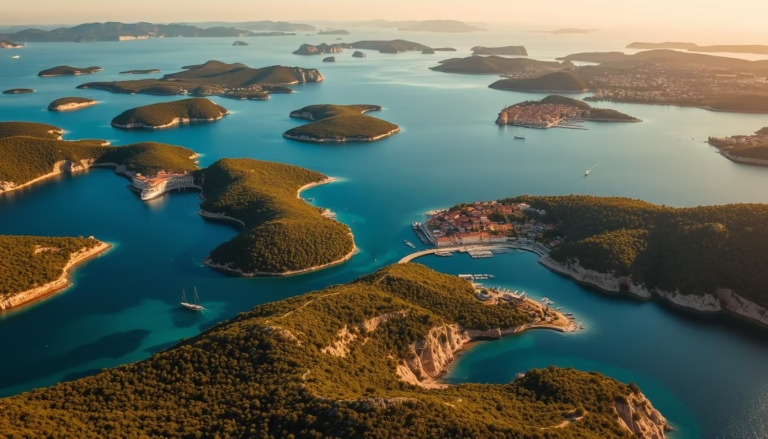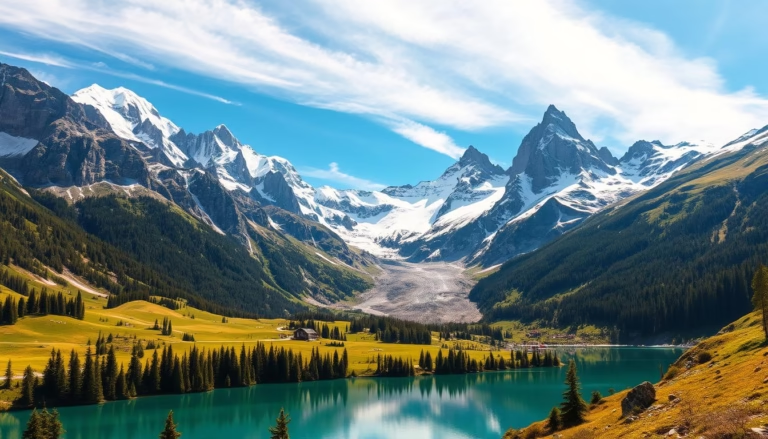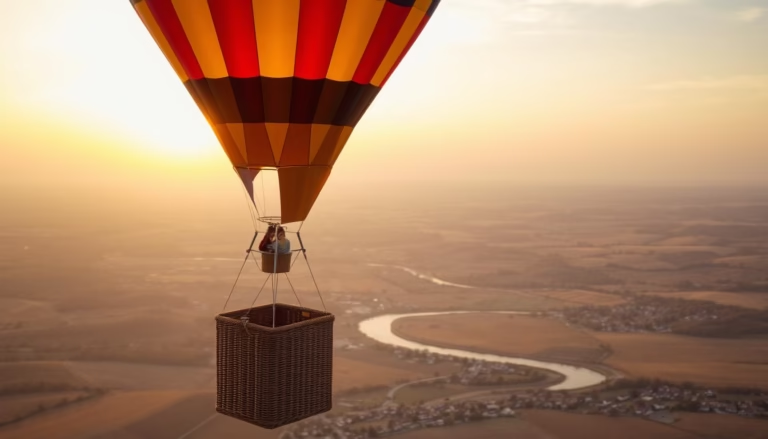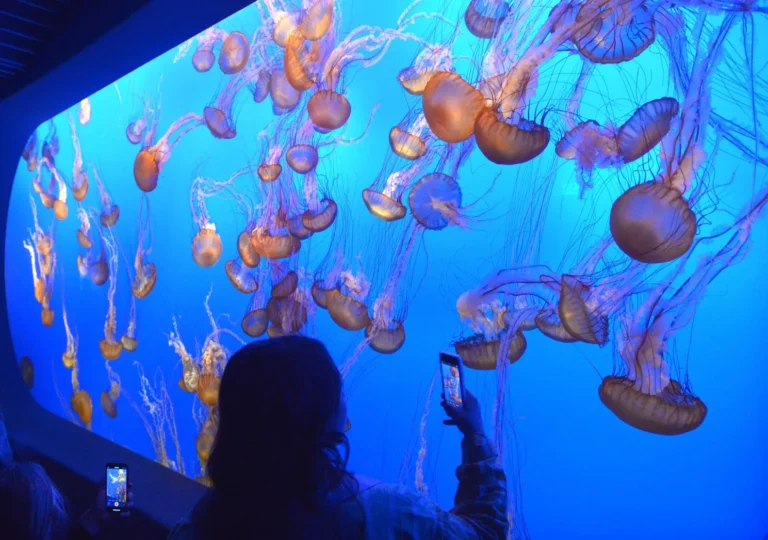Exploring Old Medina: History, Culture, and More
Step into a labyrinth of history where sun-bleached walls hold stories from centuries past. These ancient urban districts blend living traditions with architectural wonders, offering visitors a direct connection to North Africa’s rich heritage. From Casablanca’s 19th-century lanes to Fez’s medieval masterpiece, each quarter reveals unique cultural fingerprints.
Whitewashed alleyways wind past family-run bakeries and artisan workshops, creating an immersive sensory experience. In Fez, the Idrisid dynasty’s 8th-century urban design still shapes daily life, with markets buzzing alongside historic mosques. These spaces aren’t frozen in time – they pulse with modern energy while preserving craft techniques passed through generations.
What makes these districts a must-visit for cultural explorers? Their ability to balance preservation with authenticity. Artisans hammer copperware using methods unchanged for 800 years, while innovative cafes reinterpret traditional recipes. This dynamic interplay creates a living museum where every corner offers discoveries.
Key Takeaways
- North Africa’s historic quarters showcase 1,200+ years of urban design evolution
- Authentic craft traditions thrive alongside modern businesses in these living neighborhoods
- Distinct architectural styles reflect regional influences across three continents
- Compact layouts encourage pedestrian exploration of hidden cultural gems
- Daily markets and cafes offer immersive local experiences
Historical Evolution and Cultural Legacy
North Africa’s historic districts tell stories through their stones. For over twelve centuries, these urban centers have absorbed influences from Berber traders, Arab scholars, and Mediterranean seafarers. Their layered histories reveal how civilizations rise, merge, and leave lasting marks.
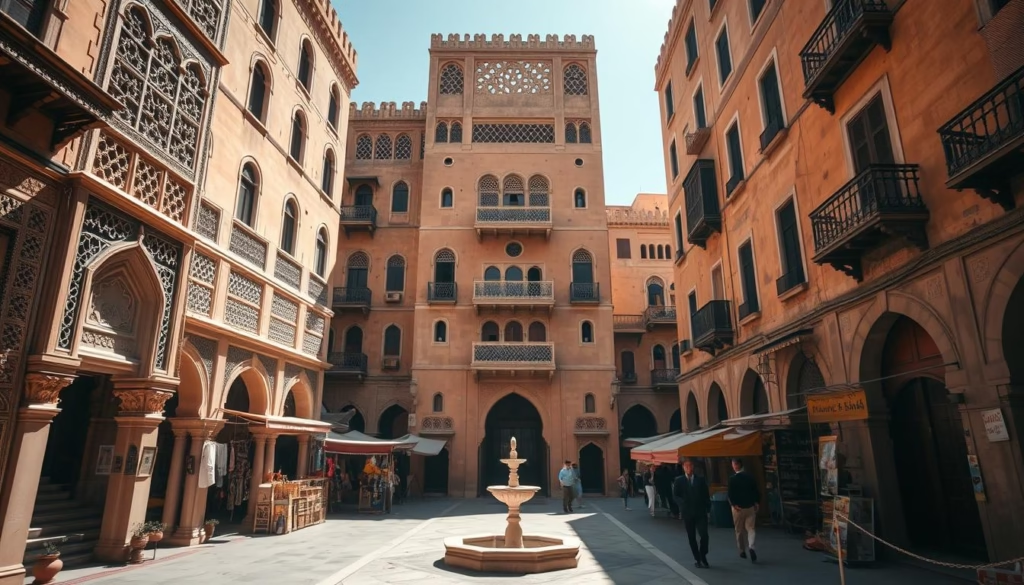
Ancient Origins and Dynastic Influences
The Idrisid dynasty planted Fez’s roots in 789 A.D., creating twin settlements divided by a river. As centuries passed, new rulers reshaped the city. The Almoravids united these quarters in the 11th century, while Almohad rulers expanded walls to their current size by the 1200s.
“Cities are living history books – every alley holds a chapter.”
Medieval Developments and Urban Growth
Coastal Casablanca began as Anfa, a 10th-century BC trading post. Phoenician, Roman, and Muslim dynasties each left their imprint over 400 years. Portuguese invaders later rebuilt the port, blending European styles with local architecture.
| City | Key Periods | Architectural Legacy |
|---|---|---|
| Fez | 8th-13th centuries | United ramparts, expanded walls |
| Casablanca | 10th BC-18th century | Coastal fortifications, hybrid designs |
Strategic locations fueled growth. Inland cities like Fez became crossroads for scholars, while coastal hubs attracted spice traders. This blend of geography and UNESCO World Heritage Site recognition helps preserve their unique character today.
Artisan techniques from medieval times still thrive here. Copperworkers use 800-year-old methods near cafes serving updated traditional teas. These spaces don’t just showcase history – they live it daily.
Navigating the old medina: Streets, Buildings, and Markets
Wandering through these living neighborhoods feels like solving a beautiful puzzle. Whitewashed corridors twist between centuries-old buildings, creating natural air conditioning that cools even the warmest days. Let’s decode their unique street logic together.
The Logic of Winding Pathways
Casablanca’s maze comes alive near Bab Marrakech gate. Here, crooked lanes burst with hardware stores and pharmacies. Follow the scent of fresh bread to find hidden residential zones where daily life unfolds behind carved wooden doors.
| Area | Key Features | Navigation Tip |
|---|---|---|
| Main Gates | Concentrated shops, busiest lanes | Follow crowd flow mornings |
| Inner Lanes | Residential zones, dead ends | Look for arched passageways |
| Market Squares | Community fountains, cafes | Use minaret towers as markers |
Where Commerce Meets Community
Spice sacks overflow near shoe stalls selling modern sneakers. These markets aren’t tourist attractions – they’re vital town hubs. Locals gather at central fountains, exchanging news while sipping mint tea.
For deeper exploration, consider visiting 17 enchanting destinations in Morocco that showcase similar vibrant street cultures. Remember: getting delightfully lost often reveals the best views of city life behind the ancient walls.
Architectural Marvels and Urban Landscapes
North Africa’s historic quarters showcase architectural genius through every carved stone and curved archway. These spaces blend practicality with beauty, where thick walls shield secret courtyards and rooftops frame mountain views.
Defensive Walls, Fortifications, and Ramparts
Fez’s massive stone barriers tell tales of medieval security needs. Builders used local limestone mixed with clay, creating walls that hardened like concrete over time. The 18th-century Sqala in Casablanca still guards the harbor with its sea-facing cannons.
Walk through Bab Bou Jeloud’s blue-tiled gate to see defensive genius. Watchtowers angle outward for better arrow shots. Ramparts widen near gates to trap invaders – clever solutions from 800-year-old military minds.
Artistic Details: Doors, Fountains, and Ornamentation
Front doors become art statements here. Carved cedar panels in Fez display geometric patterns from Andalusia. Brass knockers shaped like hands echo African traditions. Look up – even rain spouts get decorative metalwork.
Public fountains serve double duty. Their mosaic tiles cool the air while providing gathering spots. “Water and design refresh both body and spirit,” notes a local tile artisan shaping zellij patterns.
Modern Interventions Versus Historical Integrity
New concrete supports hide within ancient buildings to prevent collapse. Solar panels blend into traditional rooftops in Marrakech. The challenge? Upgrading plumbing without damaging 12th-century foundations.
Casablanca’s skyline reveals the balancing act. Glass towers rise behind painted blue buildings, their cornices preserving the city‘s character. From sea view terraces to hidden courtyards, these spaces keep rewriting their story.
Vibrant Life and Authentic Local Experiences
Daybreak transforms these historic quarters into living theaters of culture. Morning light spills across stone courtyards as residents begin their routines – a rhythmic dance perfected over centuries. The scent of fresh msemen flatbread mixes with sea air near Casablanca’s coastal gates.
Daily Rhythms: Cafes, Street Vendors, and Social Interactions
Neighborhood cafes buzz by mid-morning. Locals debate politics over steaming mint tea while chess pieces click on worn boards. Nearby, vendors arrange pyramids of lemons and olives – their stalls becoming impromptu town squares.
| Area | Morning Activity | Evening Vibe |
|---|---|---|
| Residential Lanes | Bread deliveries | Children’s games |
| Fountain Squares | Water collection | Storytelling circles |
| Market Streets | Fish cleaning | Spice trading |
Artisans preserve ancient techniques in plain sight. Copperworkers hammer patterns unchanged since Marinid rule, their workshops doubling as living museums. “We’re not just making objects,” says third-generation craftsman Ahmed Ziani. “We’re keeping arts alive through our hands.”
Preserving Heritage Amidst Urban Change
Modern life peeks through carved lattice screens. Solar panels crown rooftops while underground cables replace clay water pipes. Restoration teams blend concrete reinforcements with traditional lime plaster – saving collapsing walls without erasing history.
Young entrepreneurs inject new energy. A 1920s courtyard now hosts coding workshops beside zellij tile studios. This fusion creates a unique place where smartphone alerts harmonize with the call to prayer. Through it all, the town maintains its soul – one steaming teapot and handwoven rug at a time.
Conclusion
The heartbeat of Morocco’s heritage pulses strongest within its age-old urban cores. Fez’s UNESCO-protected quarter stands as a masterclass in medieval design, where architecture from the 9th to 20th century forms a living collection of human ingenuity. These spaces aren’t relics – they’re dynamic stages where arts evolve while respecting ancestral wisdom.
Strolling through these city labyrinths reveals why they endure. Shops selling cobalt pottery neighbor tech startups in restored buildings, proving cultural preservation fuels modern progress. The walls that once shielded kingdoms now frame vibrant town life, blending past and present seamlessly.
From Fez’s tanneries to coastal country markets, these districts offer more than views – they invite participation. Artisans share 12th-century techniques as casually as neighbors discuss weather. This unique alchemy makes Morocco’s historic quarters a world treasure, where every alley whispers stories spanning centuries.


